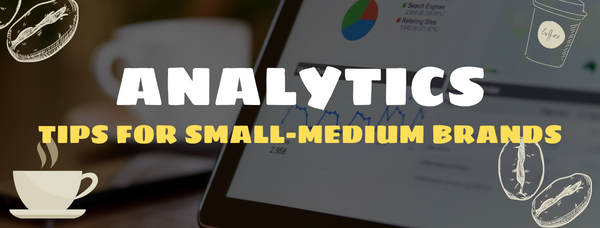Utilizing Consumer Data to Inform Coffee Brand’s Marketing Strategies. Tips for SMEs
Consumer data can help Small and Medium Enterprises get to know consumers and improve their coffee brand’s marketing strategy. This is more important than ever before, as coffee brands likely faces stiff competition on social media and other digital platforms.
However, utilizing consumer data can be tricky. Companies usually collect more data than they need, and it’s easy to get lost in vast swathes of information.
It’s possible to improve marketing strategies by gathering data sets that actually apply to your business model. Once you have the data you need, you can use AI to help identify trends and gain a competitive advantage over other businesses.

Collecting Data
Collecting consumer data can be a tricky process. You have legal obligations to follow, and should be transparent about the private data you collect and store. Most people don’t even realize they are sharing data with you, as only 14% of consumers are aware that their web data is used by businesses and other organizations.
Once you’ve gathered your data, you’ll need to break it down into usable information. This can be trickier than it sounds, as you’ll need to choose between data management platforms (DMP), consumer relationship management systems (CRM), and customer data platforms (CDP).
Choosing the right CDP, CRM, or DMP can be difficult. If you are an emerging business, you may wish to store your data on a CRM. Storing consumer data on a CRM can help you find leads and get a snapshot of current market trends. If you’re a growing company, a DMP may be more appropriate, as DMPs can help you find new leads and discover new markets.
A CDP is particularly useful if you already gather data, but don’t know what to do with it. An effective CDP can give you an accurate snapshot of your consumers, and help you utilize data analytics. Many CDPs have AI-led analytics built into the platform, meaning you can let the algorithm crunch the numbers for you.
Ultimately, you should choose whichever platform suits your business best. If you already use CRMs, DMPs, and CDPs, then you may want to spread data across them all. This will help different departments utilize the data and ensure that your marketing team has all the internal feedback they need to move forward.
Target Audience
Consumer data can be used to learn more about your target audience. This is important in a competitive industry like coffee, where everyone already has their favorite brand and flavor. You can create greater brand loyalty by creating marketing materials that reflect your consumer’s values and interests.
Using the data you’ve collected usually requires some critical thinking. For example, if you find that your followers on social media are highly educated, you can push branded messaging that teaches your audience more about how coffee improves their mental health. You should consult a nutritional psychologist who can verify your claims and offer more tips to help you connect with well-educated consumers.
Getting to know your consumers can even help you grow and expand. For example, if surveyed consumers tell you they visit other coffee shops more frequently than yours, you can work with marketing to rectify the issue. Your marketing department may be able to offer things like loyalty cards or branded merchandise to improve consumer loyalty and keep folks coming through your front door.
Testing and Adjusting
Gathering data doesn’t guarantee your marketing success. You still have to experiment with new branded materials, and can’t expect everything to work perfectly. Whenever you release new marketing content, test its efficacy and adjust as needed.
If you have a website, consider running A/B testing. A/B testing is when you run two versions of the same site and test them against each other. 50% of the traffic sees site “A”, while the other 50% sees site “B”. This is particularly useful if you want to experiment with things like layout, promotional offers, or visual imagery.
If you run a social media site, use the analytics pages to test the effectiveness of your posts and refine your digital brand. Facebook and Instagram have “insights” pages that allow you to record key consumer data points like views, likes, comments, and interactions. TikTok has a similar “insights” page, that allows you to measure the effectiveness of branded materials, too.
Use social data to inform your wider brand strategy. For example, if you find that your followers love to see “behind the scenes,” consider posting video content that shows consumers the process from bean to cup. Or, if you’re a supplier, consider posting content that shows how beans are harvested and how your business improves the local community.
Conclusion
Consumer data can improve your brand’s marketing and help you break into new markets. However, before you start collecting data, you need to have a strategy in place to store, organize, and utilize it. Choose the right CRM, CPD, or DMP for your business. You can then use the data you collect to better target your audience and test the efficacy of new marketing strategies.
Ainsley Lawrence
